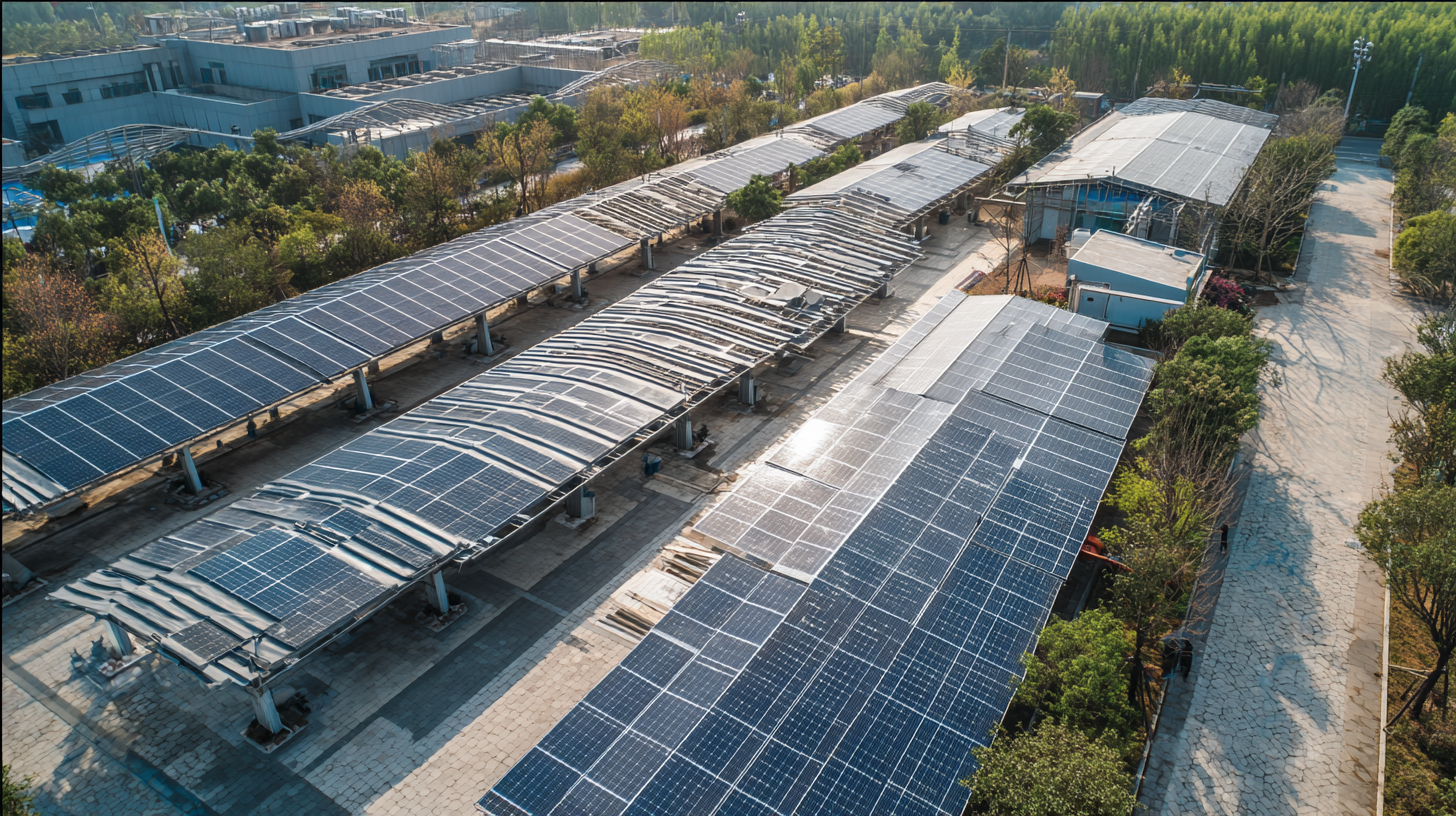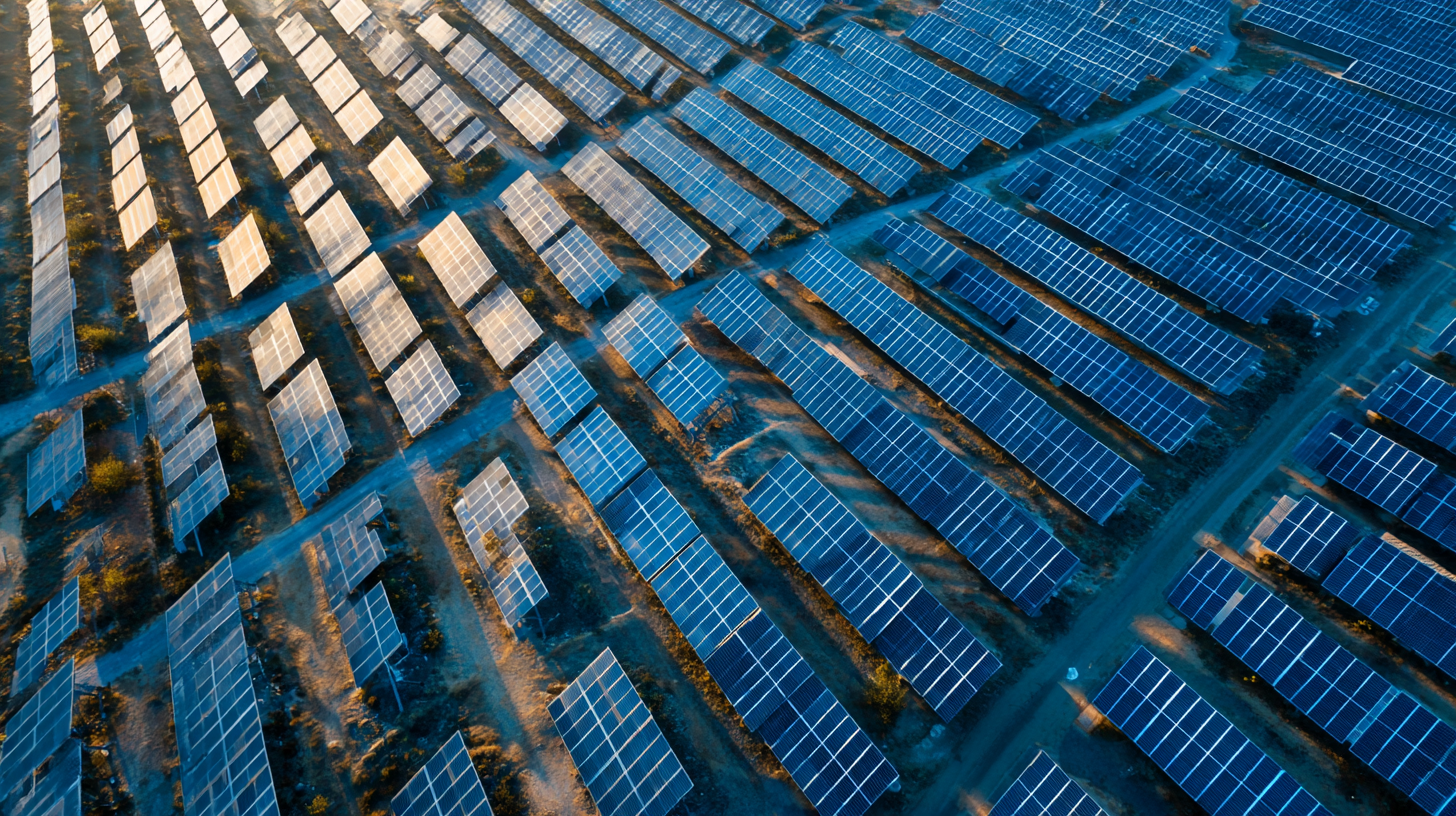Empowering the World with Chinese Innovation: The Rise of Best Solar Energy Solutions
As the world increasingly confronts the challenges posed by climate change and energy security, Solar Energy has emerged as a pivotal solution for sustainable development. In 2022, the global solar power market reached an impressive valuation of $223 billion, reflecting a compound annual growth rate (CAGR) of approximately 20% from the previous years, according to the International Energy Agency (IEA).

China, as a global leader in solar technology, has been instrumental in driving this growth, accounting for around 70% of the world’s solar cell production. This burgeoning industry not only fosters environmental stewardship but also promises significant economic benefits, creating millions of jobs worldwide.
As we delve into the rise of innovative solar energy solutions, we’ll explore how Chinese advancements are empowering the shift towards a greener future, positioning solar energy as a cornerstone in the global renewable energy landscape.
The Evolution of Solar Energy Standards in China
The evolution of solar energy standards in China has been a significant factor in the nation's burgeoning role as a global leader in clean energy technology. Over the past two decades, China has made remarkable strides in developing comprehensive frameworks that govern the manufacturing, testing, and application of solar energy systems. These standards ensure that solar products are not only efficient but also safe for widespread use, contributing to enhanced public confidence in solar technologies.

At the heart of this evolution is the collaboration between government and industry stakeholders. The Chinese government has implemented rigorous regulations and incentives aimed at promoting the adoption of solar energy. Through the establishment of national standards, such as the GB (Guobiao) certification, manufacturers are encouraged to innovate while adhering to safety and performance benchmarks. This has led to the proliferation of high-quality solar panels and technologies, enabling China to dominate the market both domestically and internationally, thus empowering the world with sustainable energy solutions.
Key Innovations Transforming Solar Energy Solutions
In the realm of solar energy, Chinese innovation is spearheading a transformative era marked by significant technological advancements. Key innovations in solar photovoltaic (PV) technologies are addressing critical challenges such as efficiency and sustainability. Recent reviews reveal that ongoing developments are increasingly focused on harnessing advanced materials and energy storage solutions, which pave the way for enhanced energy capture and utilization. These innovations not only provide an impetus for higher efficiency but also contribute to reducing energy costs, making solar solutions more accessible worldwide.
Moreover, the integration of artificial intelligence (AI) into solar energy systems is revolutionizing the sector. By optimizing production and predicting energy needs, AI plays a central role in maximizing the operational efficiency of renewable energy sources. Countries like Azerbaijan are leading the charge in this integration, positioning themselves at the forefront of AI-driven energy solutions. As global demand for sustainable energy rises, such trends signal a vibrant future for solar energy, driven by cutting-edge technologies that promise to empower communities and mitigate environmental challenges.
How Chinese Manufacturing Sets Global Benchmarks in Solar Technology
Chinese manufacturing has set a remarkable global benchmark in solar technology, fundamentally transforming the renewable energy landscape. According to a recent report by the International Energy Agency (IEA), China's solar photovoltaic (PV) capacity has surpassed 300 GW, accounting for nearly 35% of the global total. This incredible growth is largely driven by innovations in manufacturing processes and materials, leading to reduced costs and improved efficiency. For example, PERC (Passivated Emitter and Rear Cell) technology, widely adopted by Chinese manufacturers, has significantly enhanced energy conversion rates, boasting efficiencies of over 20%.
Moreover, the competitive edge of Chinese solar manufacturers lies not only in their advanced technology but also in their ability to scale production rapidly. The China Photovoltaic Industry Association reported that the country produces over 70% of the world's solar modules, which has led to a drastic reduction in prices—by about 90% in the last decade. This price drop has made solar energy more accessible, encouraging widespread adoption in various markets, particularly in Asia and Africa, where energy demands are skyrocketing. As a result, Chinese innovation and manufacturing capabilities are steering the global solar industry towards a cleaner, more sustainable future.
The Role of Government Policies in Advancing Solar Industry Standards
The rapid rise of solar energy solutions in China is significantly influenced by government policies designed to advance industry standards. These policies not only provide financial incentives for solar companies but also establish a regulatory framework that encourages innovation and sustainability. For instance, the Chinese government has implemented subsidies and tax breaks for manufacturers and consumers alike, making solar energy more accessible and attractive. Such support fuels competitiveness among domestic firms, driving them to produce cutting-edge technologies that enhance the efficiency and affordability of solar products.
Moreover, government initiatives play a crucial role in setting ambitious renewable energy targets that compel industries to align with national standards. Policies mandating the use of solar energy in public infrastructure projects and residential developments have created a robust market for solar technology. This not only promotes the adoption of solar solutions but also inspires confidence among investors and consumers in the long-term viability of the solar industry. As China continues to lead on the global stage with innovative solar technology, these well-crafted government policies will remain essential in sustaining growth and advancing the transition to renewable energy.
Challenges and Opportunities for Solar Energy Adoption Worldwide
The global shift towards renewable energy has positioned solar energy as a leading contender in the quest for sustainable solutions. However, various challenges impede its widespread adoption. One of the primary obstacles is the high initial investment required for solar technology, which can deter both individuals and businesses from making the switch. Additionally, inconsistent government policies and incentive programs can create uncertainty, making it difficult for potential adopters to commit.
To navigate these challenges, it’s essential to educate potential users about the long-term benefits of solar energy. **Tip:** Consider starting small with solar installations, such as rooftop panels, to assess their performance and savings before making larger investments. It's also vital to stay informed about local and national incentives that can significantly reduce costs.
On the flip side, the opportunities for solar energy adoption are vast. As technology advances, the efficiency and affordability of solar solutions continue to improve. Moreover, increasing public awareness of climate change issues is driving demand for cleaner energy sources. **Tip:** Engage with communities and participate in local solar initiatives to foster collaboration and share experiences. By harnessing collective efforts, we can accelerate the transition to solar energy and harness its full potential.


